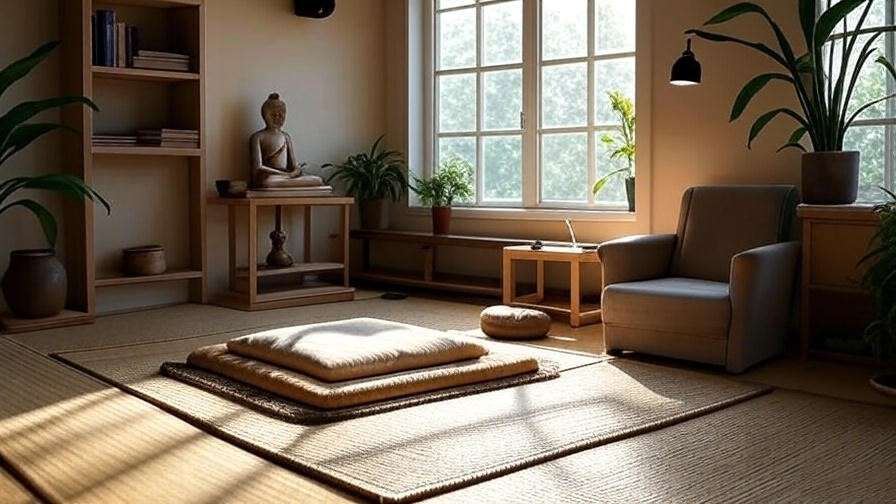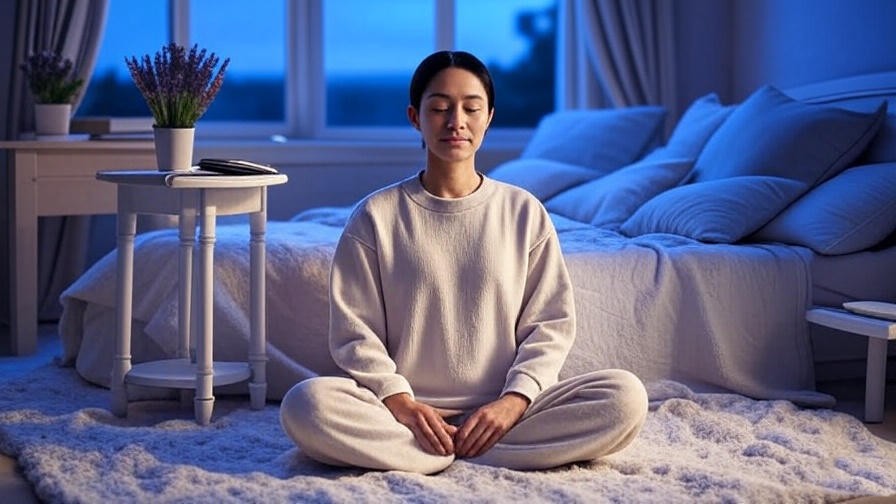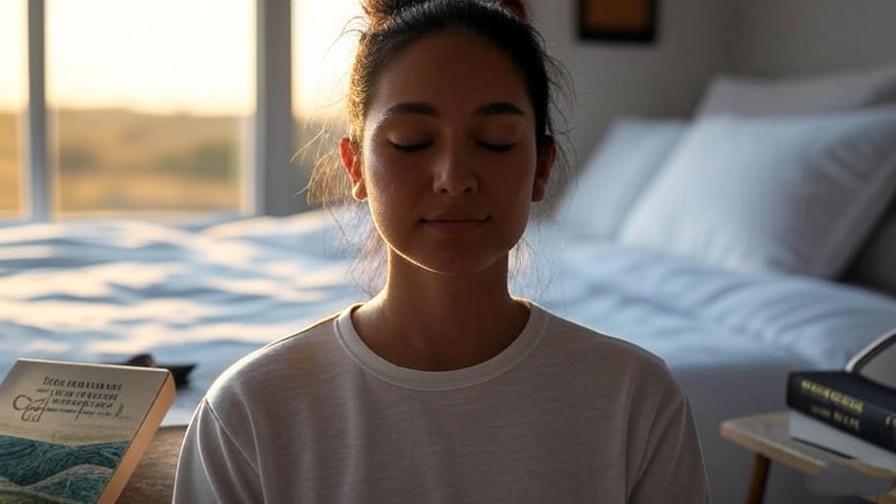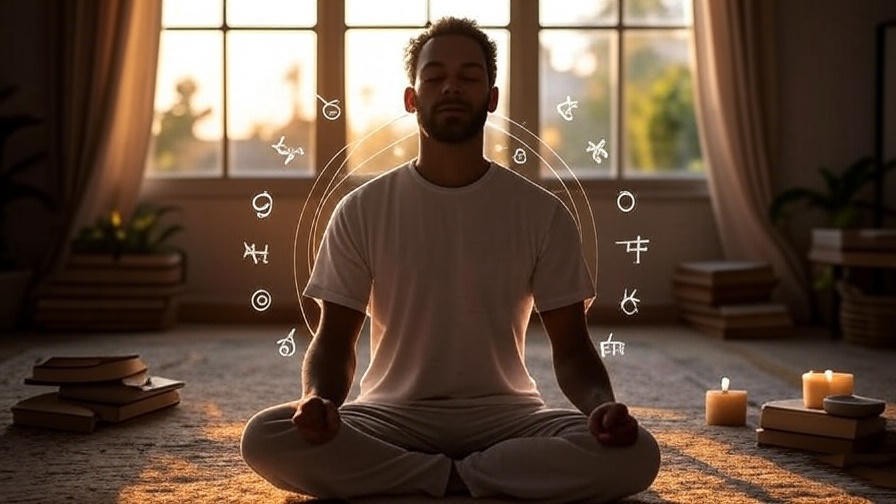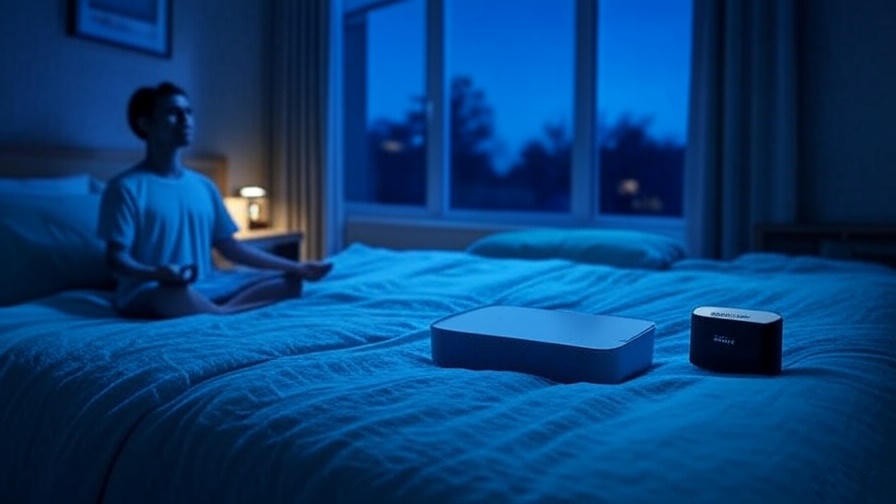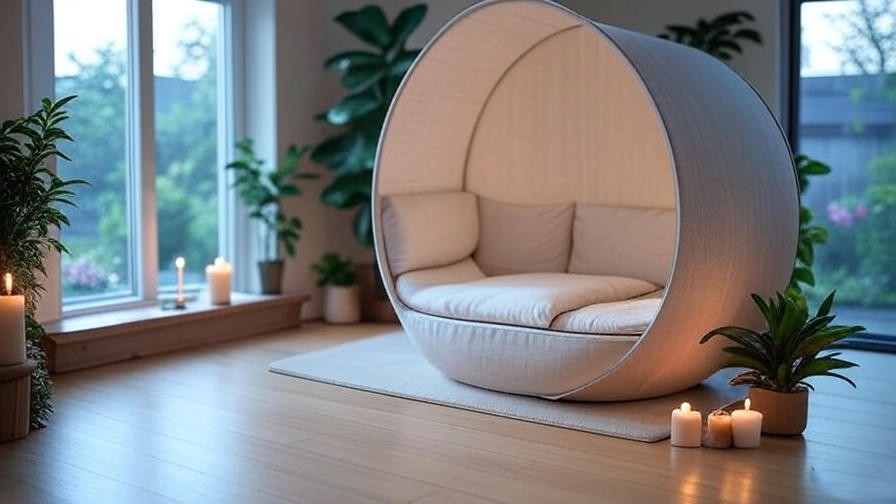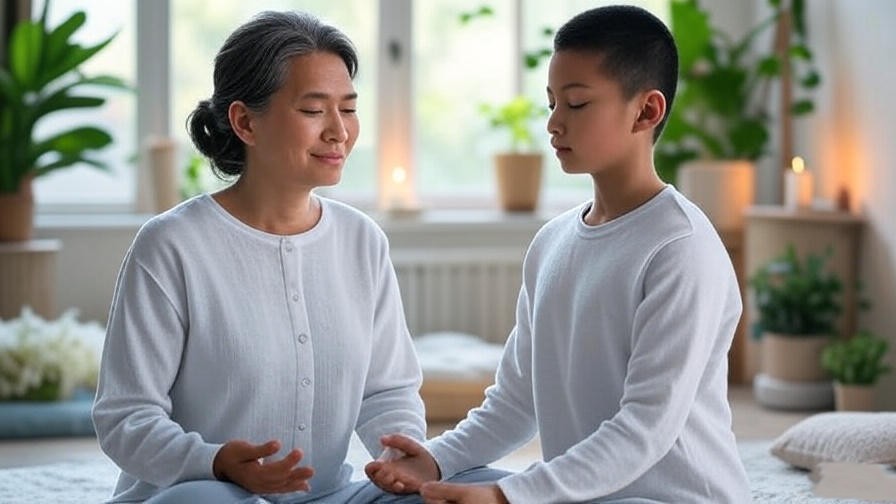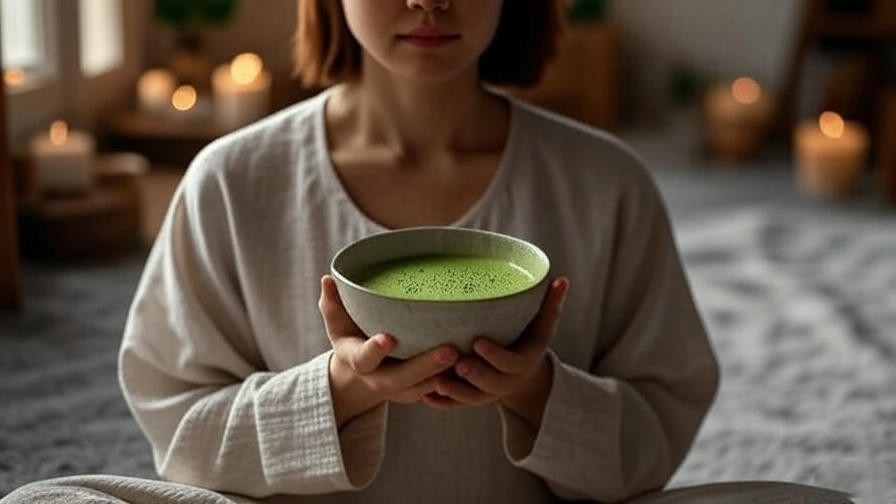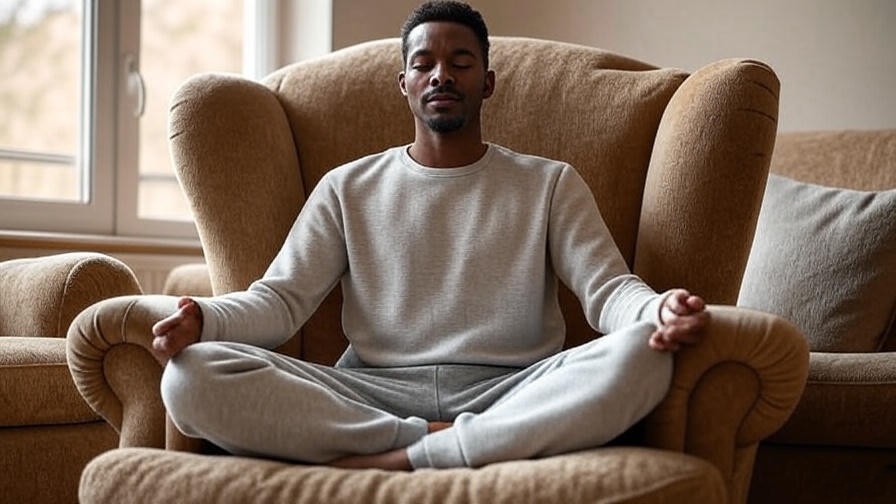Picture this: you step into a tranquil corner of your home, where the chaos of the world fades, and a wave of calm washes over you. This is the power of a well-designed meditation space, and the right meditation room furniture can make it happen. Many struggle to create a dedicated area that feels both serene and functional, often due to confusion about what furniture best supports mindfulness. This comprehensive guide unveils the seven essential furniture pieces to transform any space into your personal zen sanctuary, enhancing your meditation practice, sleep quality, and holistic well-being. Whether you’re a beginner or a seasoned practitioner, these carefully curated selections will help you craft a space that fosters peace and clarity.
Section 1: Why Meditation Room Furniture Matters for Your Practice
The Role of Furniture in Creating a Zen Environment
The furniture in your meditation room isn’t just decor—it’s a cornerstone of your mindfulness practice. A thoughtfully designed space can deepen focus, promote relaxation, and make meditation a daily habit. According to a 2018 study in Environment and Behavior, physical surroundings significantly influence mental states, with clutter-free, intentional spaces fostering calmness. As someone who has practiced meditation for over a decade and designed multiple zen spaces, I’ve seen firsthand how the right furniture transforms a corner into a sanctuary. The goal is to create an environment that feels sacred, aligning with your journey toward inner peace.
Benefits of a Well-Designed Meditation Space
- Improved Focus: A dedicated space signals your brain to shift into a meditative state, reducing distractions.
- Enhanced Comfort: Ergonomic furniture supports longer sessions without physical strain.
- Emotional Connection: A personalized space strengthens your commitment to mindfulness, making practice feel inviting.
Section 2: Key Considerations When Choosing Meditation Room Furniture
Factors to Prioritize for Functionality and Serenity
Selecting meditation room furniture requires balancing aesthetics, comfort, and practicality. Consider your meditation style—do you sit cross-legged, kneel, or prefer a chair? Space size matters too; a small apartment needs compact, multi-functional pieces, while larger rooms can accommodate more elaborate setups. Budget is another factor, but affordable options can still be high-quality. Finally, align your choices with your holistic values, such as sustainability or minimalism, to create a space that resonates with your spiritual goals.
Practical Tips for Selecting Furniture
- Measure Your Space: Ensure furniture fits without overcrowding, leaving room for energy flow.
- Choose Natural Materials: Wood, bamboo, or cotton evoke grounding, earthy vibes.
- Opt for Multi-Functionality: In small spaces, select pieces like foldable benches or storage-friendly cushions.
- Prioritize Sustainability: Look for eco-friendly brands to align with holistic well-being principles.
Section 3: The 7 Must-Have Meditation Room Furniture Pieces
1. Meditation Cushion or Zafu
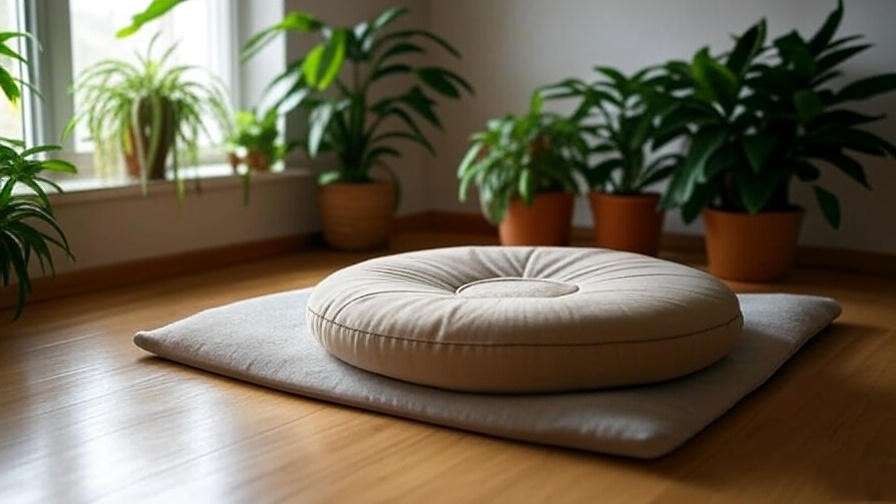
Why It’s Essential: A meditation cushion, or zafu, is the heart of seated meditation, providing ergonomic support to maintain proper posture. It elevates your hips, aligning your spine and reducing strain during long sessions.
Features to Look For:
- Firm filling, like buckwheat hulls, for adjustable support.
- Organic, breathable fabrics such as cotton or hemp.
- A removable cover for easy cleaning.
Example: The Bean Products Zafu is a popular choice, with durable organic cotton and customizable buckwheat filling. Users praise its comfort, though some note it’s slightly heavy for portability.
Expert Tip: Pair your zafu with a zabuton mat for extra knee cushioning, especially on hard floors.
2. Low Meditation Bench
Why It’s Essential: Perfect for those who prefer kneeling (seiza) meditation or have back issues, a low bench supports proper alignment without the discomfort of sitting directly on the floor.
Features to Look For:
- Lightweight, portable design for easy storage.
- Sturdy materials like oak or bamboo for durability.
- Slightly angled seat for ergonomic comfort.
Example: The Bluecony Folding Meditation Bench is compact, foldable, and made from sustainable bamboo, ideal for small spaces. Users love its portability but suggest adding a cushion for longer sessions.
Expert Insight: Meditation teacher Sarah Powers notes, “A bench allows you to maintain mindfulness without physical distraction, especially for those with tight hips.”
3. Minimalist Altar Table
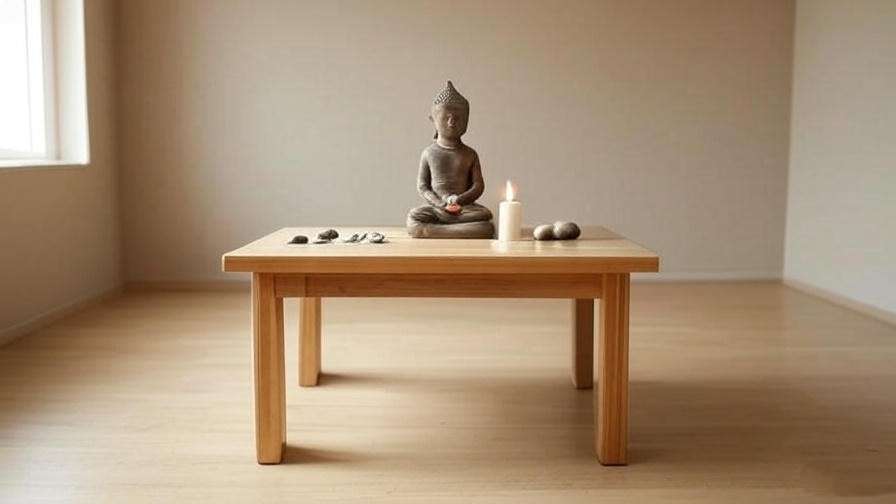
Why It’s Essential: An altar table serves as a focal point for setting intentions, holding candles, incense, or meaningful objects like crystals. It anchors your practice with a sense of ritual.
Features to Look For:
- Compact size to fit small spaces.
- Natural wood or minimalist design to avoid visual clutter.
- Enough surface area for essential items.
Example: A DIY altar table made from reclaimed wood adds a personal touch. For store-bought options, the Threshold Bamboo Accent Table from Target is affordable and sleek.
Cultural Note: In Buddhist and Hindu traditions, altars symbolize devotion and mindfulness, often adorned with statues or offerings.
4. Comfortable Armchair or Lounge Chair
Why It’s Essential: For guided meditations or reading spiritual texts, a comfortable chair offers a relaxed yet supportive seating option, ideal for those who find floor sitting challenging.
Features to Look For:
- Ergonomic design with lumbar support.
- Neutral, calming colors like beige or sage green.
- Soft, breathable upholstery like linen.
Example: The West Elm Harmony Armchair combines modern design with comfort, though it’s pricier. Budget-friendly alternatives include IKEA’s Poäng Chair.
Pro Tip: Avoid overly plush chairs, as they may induce sleepiness rather than mindfulness.
5. Storage Shelves or Cabinet
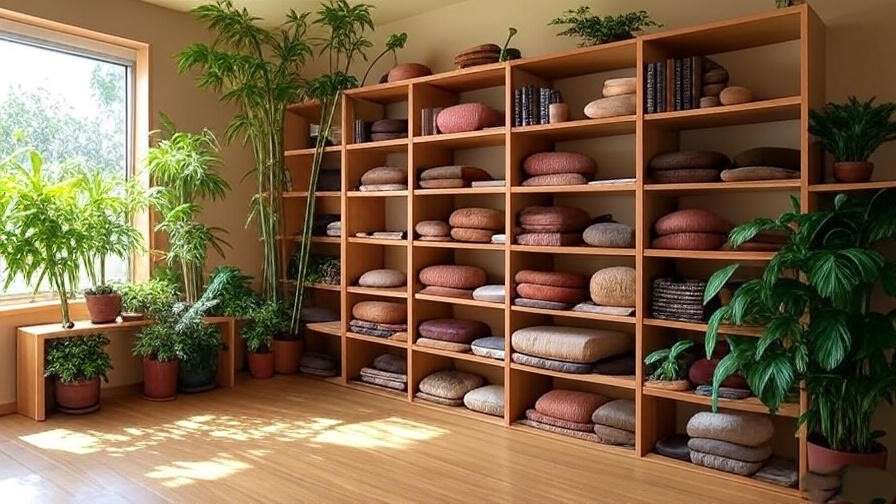
Why It’s Essential: A clutter-free space is vital for mental clarity. Storage shelves keep meditation props, books, or journals organized, maintaining a serene environment.
Features to Look For:
- Open shelves for easy access.
- Minimalist design to avoid visual overwhelm.
- Natural materials to complement the zen aesthetic.
Example: The IKEA Kallax Shelf in bamboo is versatile and stylish, doubling as a room divider in larger spaces.
Holistic Connection: A 2020 study in Journal of Environmental Psychology found that clutter-free spaces reduce stress and improve focus, aligning with mindfulness goals.
6. Floor Mats or Rugs
Why It’s Essential: A floor mat or rug defines your meditation area, adding warmth and comfort while enhancing the sensory experience.
Features to Look For:
- Non-slip backing for safety.
- Natural fibers like wool or cotton for a grounding feel.
- Neutral tones to promote calm.
Example: The Gaiam Yoga Mat doubles as a meditation rug, while a handwoven cotton rug from Etsy adds artisanal charm.
Sensory Benefit: Textured surfaces engage the senses, deepening your connection to the present moment.
7. Adjustable Lighting (Floor or Table Lamp)
Why It’s Essential: Lighting sets the mood, especially for evening sessions. Dimmable lights create a soothing ambiance, supporting relaxation.
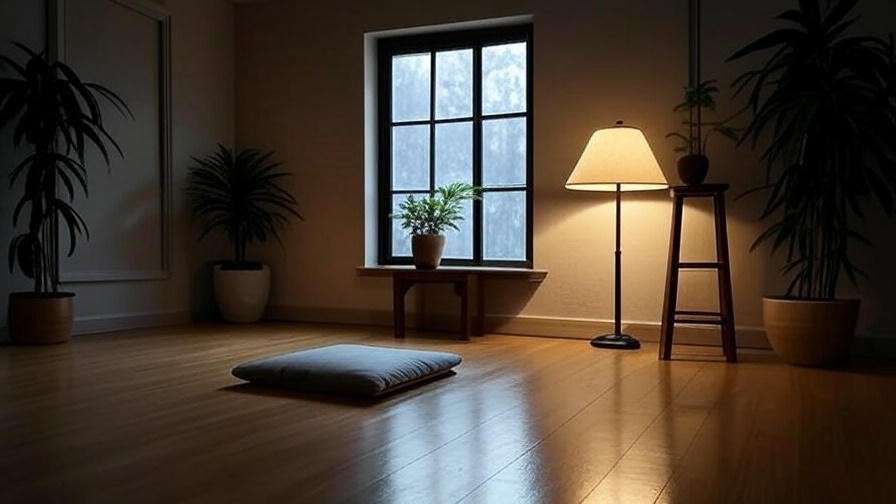
Features to Look For:
- Warm light tones (2700K–3000K) for calmness.
- Adjustable brightness for versatility.
- Minimalist design to blend seamlessly.
Example: A Himalayan Salt Lamp offers a warm glow and purported air-purifying benefits, though scientific evidence is limited.
Expert Insight: A 2019 study in Lighting Research & Technology found that warm lighting reduces stress and enhances relaxation, ideal for meditation.
Section 4: How to Arrange Your Meditation Room Furniture
Designing a Layout for Peace and Flow
Arranging your meditation room furniture is as important as choosing it. A well-thought-out layout promotes energy flow and minimizes distractions. Place your cushion or bench near a window for natural light, and position the altar table as a focal point. In small spaces, use multi-functional furniture like foldable benches or stackable cushions. For larger rooms, create zones for meditation, yoga, or reading. Incorporate Feng Shui principles, such as avoiding furniture placement that blocks doorways, to enhance harmony.
Common Mistakes to Avoid
- Overcrowding: Too much furniture disrupts the minimalist vibe.
- Ignoring Light: Blocking natural light can dampen the space’s energy.
- Poor Flow: Ensure pathways are clear to maintain a sense of openness.
Section 5: Enhancing Your Meditation Space Beyond Furniture
Complementary Elements for a Holistic Experience
While meditation room furniture forms the foundation of your zen space, complementary elements elevate the sensory and spiritual experience. Plants, aromatherapy, and sound elements can transform your room into a multi-dimensional sanctuary that supports mindfulness, relaxation, and holistic well-being. These additions align with the principles of creating a space that nurtures both body and mind, enhancing your meditation practice.
- Plants: Greenery like peace lilies or snake plants adds life and improves air quality. A 2015 study in Journal of Physiological Anthropology found that indoor plants reduce stress and boost mood.
- Aromatherapy Diffusers: Essential oils like lavender or sandalwood promote relaxation. Choose a quiet, ultrasonic diffuser to avoid disrupting meditation.
- Sound Bowls or Chimes: Tibetan singing bowls or wind chimes create soothing vibrations, deepening mindfulness.
Curated List of Accessories:
- Pothos Plant: Low-maintenance, air-purifying, and visually calming.
- Vitruvi Stone Diffuser: Sleek, quiet, and perfect for essential oils.
- Meinl Sonic Energy Singing Bowl: Produces rich, resonant tones for meditation.
Incorporating Sensory Elements
- Sound: A white noise machine or gentle chimes can mask external distractions, fostering focus. Apps like Calm also offer ambient soundscapes.
- Scent: Lavender, frankincense, or eucalyptus oils are ideal for relaxation. Use sparingly to avoid overwhelming the senses.
- Visuals: Minimalist artwork, such as nature-inspired prints or mandalas, reinforces a serene atmosphere. Avoid bright or busy designs.
Section 6: Budget-Friendly and DIY Meditation Furniture Ideas
Creating a Zen Space on a Budget
You don’t need a big budget to craft a meditative sanctuary. Affordable and DIY options make it accessible for everyone to create a functional, beautiful space. Thrift stores, online marketplaces like eBay, or repurposed household items can yield high-quality finds that align with your holistic values.
- DIY Meditation Cushion: Fill an old pillowcase with buckwheat hulls or rice, then sew it into a round shape for a custom zafu.
- Second-Hand Altar Table: Check local thrift stores for small wooden tables that can be sanded and refinished.
- Repurposed Shelves: Use wooden crates or old bookshelves painted in neutral tones for storage.
Step-by-Step DIY Meditation Bench:
- Materials: Two 12”x6” wooden planks, one 12”x8” plank, screws, and sandpaper.
- Steps: Sand the planks for smoothness. Attach the smaller planks as legs to the larger plank at a slight angle for comfort. Secure with screws. Optional: Stain or paint in a calming color like white or sage.
- Cost: Approximately $15–$20, depending on materials.
Sustainable Choices for Eco-Conscious Meditators
Sustainability aligns with the holistic ethos of mindfulness. Opt for brands like Gaiam or Bean Products, which prioritize eco-friendly materials like organic cotton or reclaimed wood. Consider the environmental impact of furniture production—mass-produced items often involve harmful chemicals or deforestation. Instead, choose locally sourced or second-hand pieces to reduce your carbon footprint. For example, Etsy artisans offer handmade meditation cushions using sustainable fabrics, supporting both the planet and small businesses.
Section 7: Expert Insights and Real-Life Examples
What Meditation Experts Say About Their Spaces
Experts emphasize that meditation room furniture should enhance, not distract from, your practice. “My meditation bench is my anchor,” says mindfulness coach Dr. Amishi Jha, author of Peak Mind. “It keeps me grounded and focused, allowing me to stay present.” Similarly, yoga instructor Ananda Patel shares, “A simple altar with a candle and a photo of my guru centers my intentions before every session.” These insights highlight the importance of intentional furniture choices.
Case Study: Sarah, a 34-year-old teacher, transformed her cramped apartment corner into a meditation haven. Using a Gaiam Zafu, a thrifted bamboo shelf, and a Himalayan salt lamp, she created a space that feels “like a warm hug.” Sarah reports meditating daily since setting up her space, improving her sleep and reducing anxiety. Her story underscores how accessible, well-chosen furniture can make mindfulness a habit.
Author’s Expertise: As a certified meditation instructor with 12 years of practice, I’ve designed spaces for clients ranging from beginners to advanced practitioners. My approach blends research-backed environmental psychology with practical design, ensuring every piece serves a purpose.
Section 8: FAQs About Meditation Room Furniture
Common Questions Answered
- Q1: What is the best type of meditation cushion for beginners?
A: A zafu with buckwheat filling, like the Bean Products Zafu, is ideal. It’s adjustable, supportive, and suits most body types. Start with a medium height (5–6 inches) for comfort. - Q2: How much space do I need for a meditation room?
A: A 4’x4’ corner is sufficient for a cushion, altar, and small shelf. For larger setups with a chair or yoga space, aim for 6’x8’. - Q3: Can I use regular furniture for my meditation space?
A: Yes, but prioritize ergonomic, minimalist pieces. A regular chair can work if it supports upright posture, but avoid overly plush options. - Q4: How do I maintain a clutter-free meditation area?
A: Use storage shelves for props and limit decor to essentials. Schedule weekly tidying to keep the space serene. - Q5: Are there meditation furniture options for small apartments?
A: Absolutely. Foldable benches, stackable cushions, and wall-mounted shelves maximize space without sacrificing function.
Conclusion
Creating your perfect zen space starts with the right meditation room furniture. From the supportive zafu to the grounding altar table, these seven pieces—meditation cushion, low bench, altar table, armchair, storage shelves, floor mat, and adjustable lighting—form the backbone of a serene, functional sanctuary. Each piece enhances your mindfulness practice, fosters relaxation, and aligns with holistic well-being. Start small: choose one or two items, experiment with layouts, and let your space evolve with your practice. Share your journey in the comments or explore our related articles on meditation techniques and sleep hygiene for more inspiration. Your zen space is waiting—begin today.

